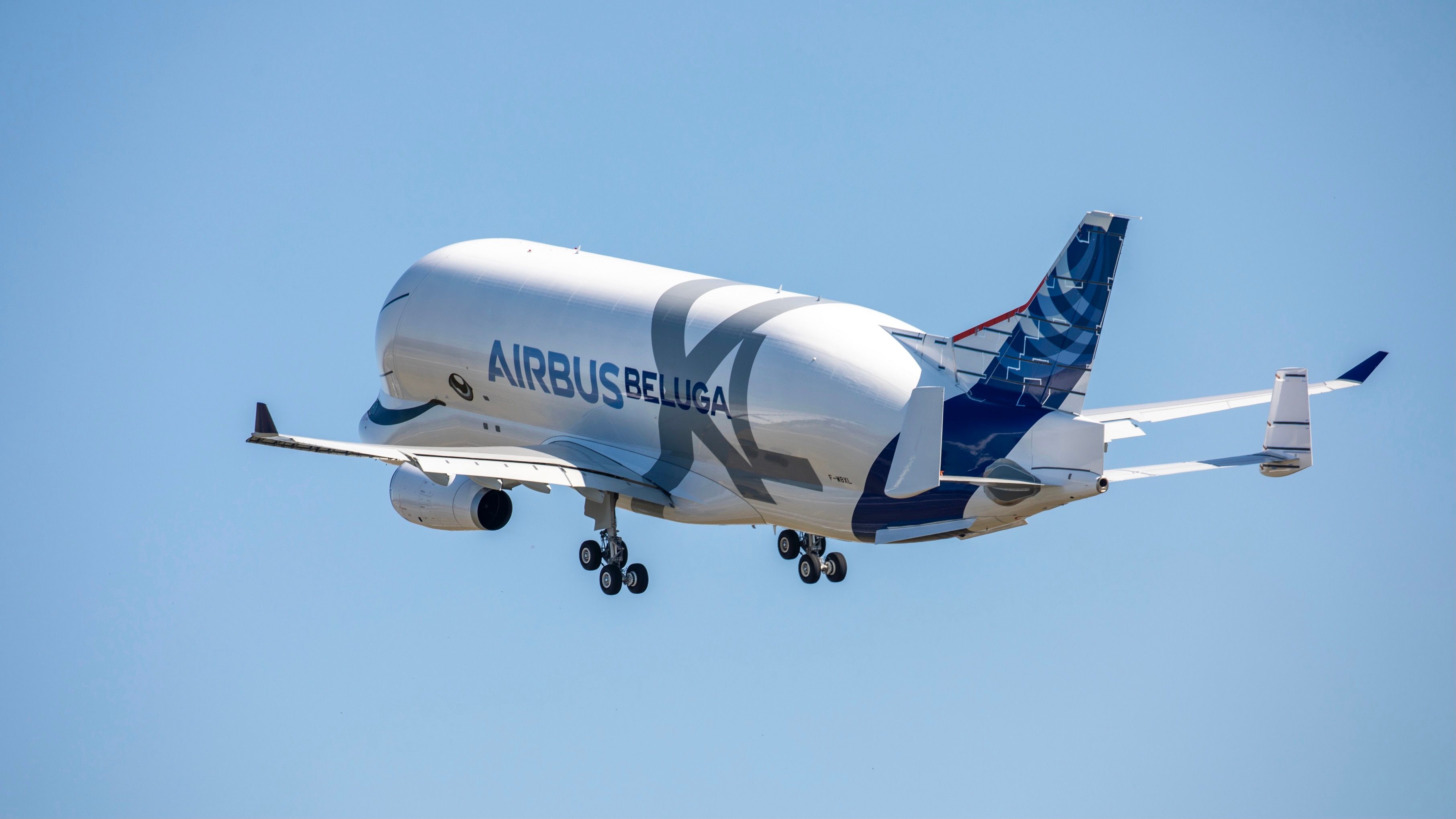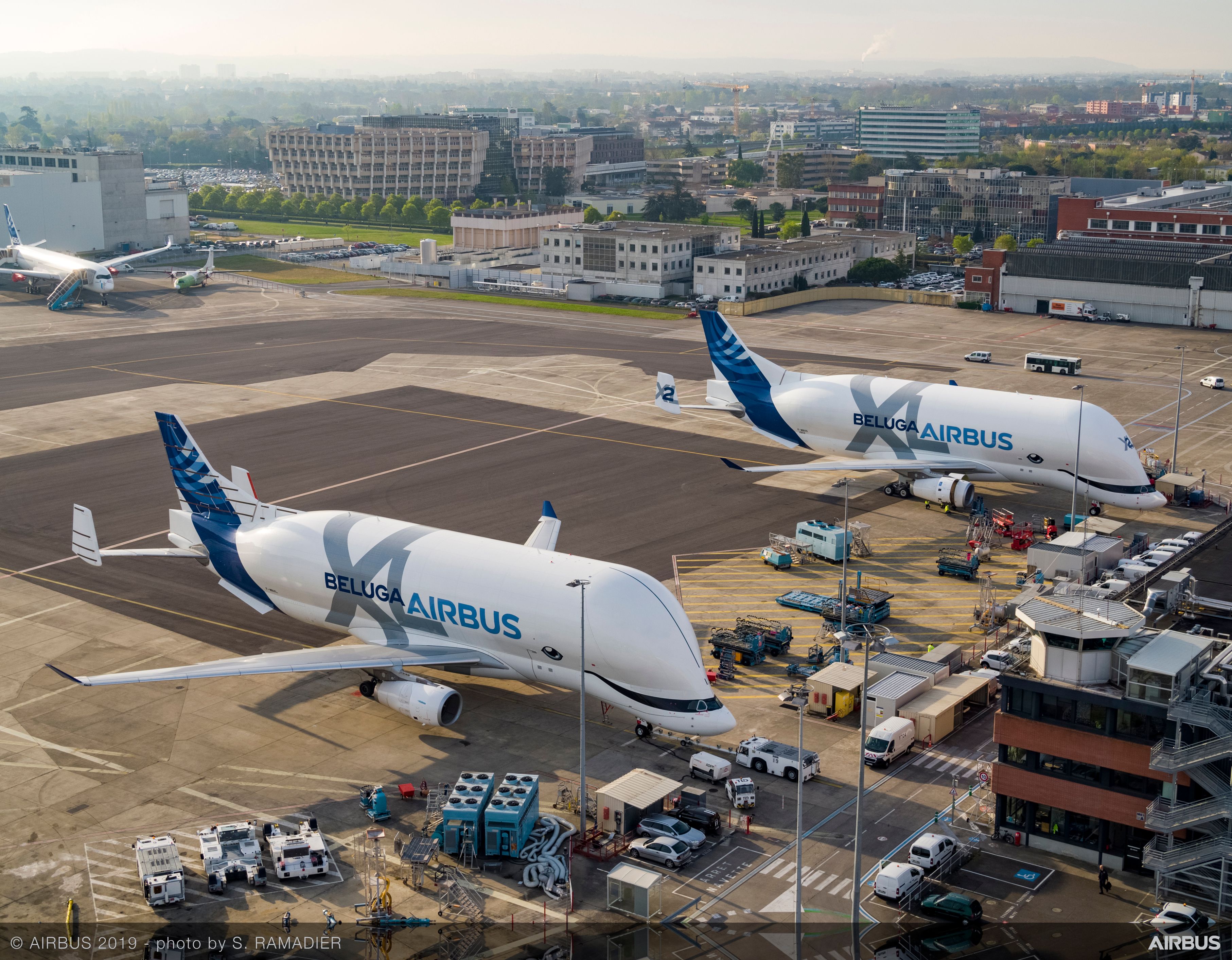The majority of today's cargo aircraft are specially designed versions of existing passenger aircraft. By filling the main cabin with freight instead of seats, cargo operators can use these to ferry all kinds of goods worldwide much faster than by land or sea. But what about outsize cargo? European manufacturer Airbus has developed the 'Beluga' family for this exact purpose, but why is its most recent iteration not based on a more modern aircraft?
The Beluga family
Airbus's first outsize cargo aircraft was officially named the A300-600ST (Super Transporter). However, after its introduction in the mid-1990s, it received a widespread nickname, which has stuck ever since. Because its bulbous fuselage resembles a particular whale species, the A300-600ST is now widely known as the Beluga.
By 1999, Airbus had produced five of these striking aircraft, which were based on its first-ever widebody airliner, the A300. The Beluga is a heavily modified version of this game-changing twinjet and allows Airbus to transport outsize components between its sites across Europe.
After two decades of service, Airbus began modernizing its aging Beluga fleet. Its new outsize cargo aircraft made its first test flight in July 2018 and is known as the BelugaXL. This larger and more modern behemoth entered service in January 2020 and is based on the Airbus A330-200F. But why didn't Airbus use the next-generation A330-800 as a base aircraft instead?
Get the latest aviation news straight to your inbox: Sign up for our newsletters today.
A330-200 vs A330-800
First of all, it is worth briefly touching on how the A330-200 compares to its next-generation counterpart. The -200 entered service with Korean Air in 1998 as a short-fuselage version of the original -300. This had been introduced by French carrier Air Inter four years previously.
Meanwhile, the A330-800 is the smallest variant in the ultra-modern A330neo series. Kuwait Airways received the first delivery of this type in October 2020. Uganda Airlines followed suit two months later.
Much like its older counterpart, the short-fuselage -800 entered service after the standard, longer version. In the A330neo case, the longer model is designated as the -900.
Let's look at some specifications for the -200 (listed first) and -800 (listed second).
- Length - Both 58.82 meters.
- Wingspan - 60.3 meters vs 64 meters.
- Height - 17.39 meters/16.90 meters (-200F) vs 17.39 meters.
- Range - 13,450 km/7,250 NM (7,400 km/4,000 NM for -200F) vs 15,094 km (8,150 NM).
- Typical capacity - 246 passengers/70,000 kg of cargo (-200F) vs 220-260 passengers.
As we can see, there is little to separate the A330-200 and -800 in terms of their specifications. Both have similar dimensions and capacities, while the newer -800 edges in performance-based aspects, including range, as one might expect.
Want answers to more key questions in aviation? Check out the rest of our guides here.
Why not use the A330-800 for the BelugaXL?
However, Airbus had several good reasons to opt for the older -200 when developing the BelugaXL. One key factor is the fact that the A330-200 already has an established freight variant. This makes it easier to convert than the -800, which is yet to see such a development.
Indeed, the -800 outperforms the -200 in terms of range. However, this is less important in terms of BelugaXL operations, as most of its trips will take place within Europe anyway. Furthermore, this advantage would likely be less significant in the event of a conversion, as cargo aircraft generally have lower ranges than their passenger-carrying counterparts.
Finally, time is also an essential factor in this discourse. When looking at Airbus's timescales in its rollout of the BelugaXL, the established A330-200 was much more conducive to meeting these. The new outsize cargo aircraft entered service almost a year before the A330-800.
As such, using the newer variant as a basis for the BelugaXL would have negatively impacted the project's timeframe. For now, the A330neo remains a passenger-focused family. The A330neo program itself has had a turbulent journey so far, with notable snubs over the years. Yet, there is hope in this next chapter.
Delivery powerhouses
The BelugaXL isn't the only behemoth that stands out at cargo hangars across the globe. The Boeing Dreamlifter is also a force to be reckoned with. Still, while the Dreamlifter has a better payload, the BelugaXL is larger overall.
The BelugaXL program achieved a significant milestone this summer. The sixth and final unit of the model rolled out of Airbus' facilities in Toulouse, France, with a special livery. This marked the end of the model's production run. As such, it is a rarity to spot one in the skies.
What do you make of the Airbus BelugaXL? Do you think it should have been based on the new A330-800 instead of the existing A330-200? Let us know your thoughts about the aircraft in the comments section.



